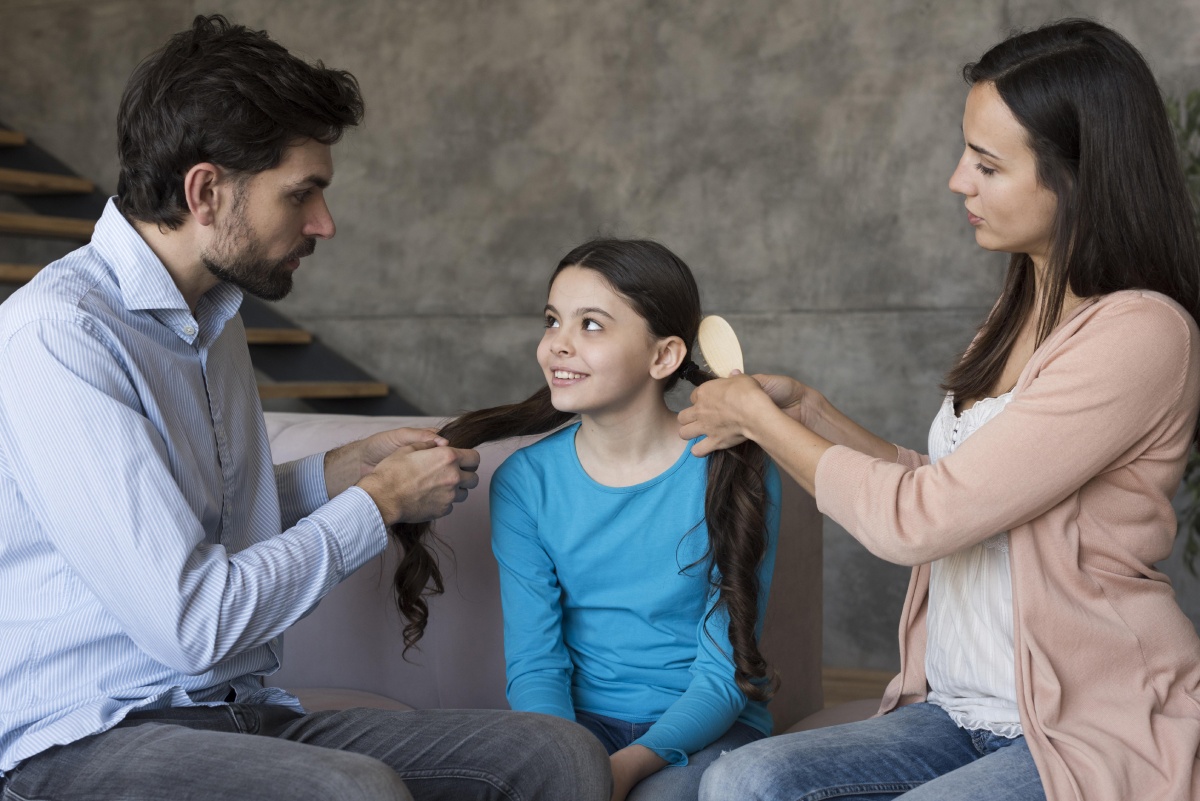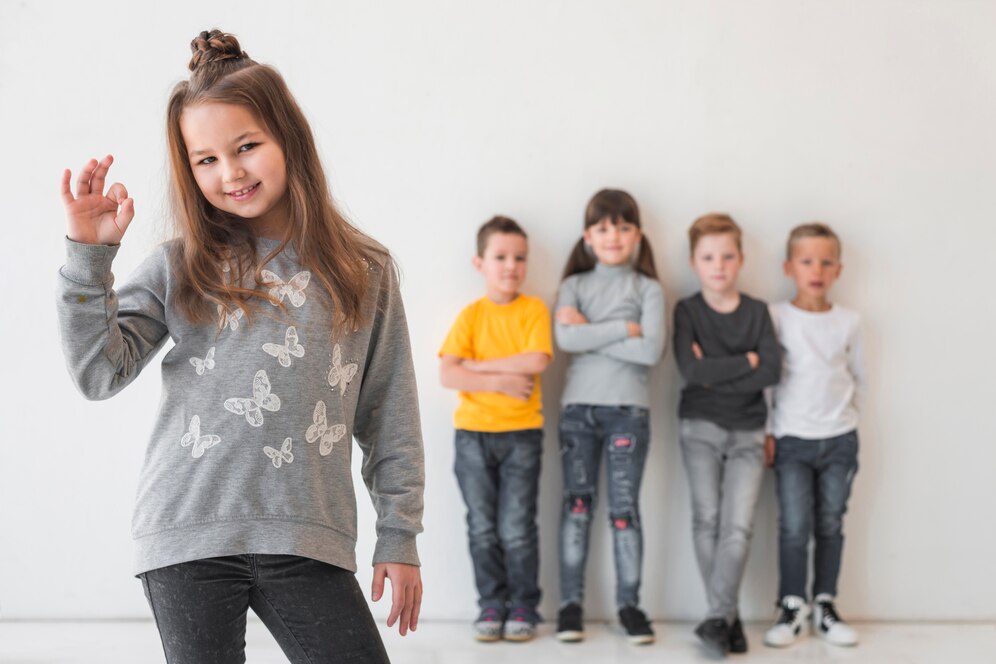
When Does Puberty Typically Start? A Parent’s Guide
Puberty – Ready or Not, It’s Coming
Is your child starting to ask more questions about their body? Are you noticing subtle changes in behaviour, voice, or appearance?
Whether you’re parenting a giggling tween or a curious eight-year-old, understanding when puberty typically starts can feel like navigating a maze — confusing, emotional, and at times, overwhelming.
As a parent, knowing the average puberty age, recognising the first signs of puberty, and learning how to respond appropriately can make all the difference.
- Support your child’s emotional well-being
- Prepare them for what’s ahead
- Prevent surprises that cause anxiety or shame
This guide breaks it all down in simple terms, offering real-world examples, credible information, and guidance to help you show up with confidence and compassion during this big transition.
What Is Puberty, Really?
At its core, puberty is the process by which a child’s body develops into an adult body capable of reproduction. But it’s also so much more than just physical changes.
It involves:
- Hormonal shifts (like oestrogen or testosterone)
- Emotional and mental growth
- Social and identity development
- A redefinition of the parent-child relationship
And yes, all of this can start sooner than you might expect.
What’s the Average Puberty Age?
Age Ranges by Sex
According to the NHS and the Royal College of Paediatrics and Child Health:
- Girls typically begin puberty between the ages of 8 and 13
- Boys usually start between the ages of 9 and 14
This is considered the normal range, but remember every child is different. Genetics, nutrition, lifestyle, and even emotional stress can influence the puberty timeline.
Fun Fact: Girls often begin puberty around 1–2 years earlier than boys, which is why a Year 6 classroom can feel like a mix of kids and mini-adults!
Puberty Development Stages: What Happens and When?

Doctors use the Tanner Scale (named after paediatrician James Tanner) to describe the sequence of puberty milestones. It’s split into five distinct stages for both boys and girls.
For Girls
Tanner Stage
What Happens?
Stage 1
Prepubertal – no visible changes
Stage 2
Breast buds (thelarche), pubic hair starts
Stage 3
Growth spurt, armpit hair, body odour
Stage 4
First period (menarche), fuller hips
Stage 5
Adult body shape and reproductive maturity
For Boys
Tanner Stage
What Happens?
Stage 1
Prepubertal – no visible signs
Stage 2
Enlarged testicles, pubic hair
Stage 3
Height increase, voice cracks, acne
Stage 4
Muscle growth, deeper voice, and facial hair
Stage 5
Adult body and fertility reached
What Are the First Signs of Puberty?
Now that you know the average age and stages, what does puberty actually look like in real life?
In Girls
- Breast buds (often tender)
- Pubic hair (light and sparse at first)
- Body odour or sweating
- Mood swings or emotional sensitivity
- Growth in height
The first period (menarche) usually follows 1.5 to 2 years after breast development begins.
In Boys
- Testicle enlargement
- Scrotum thinning or reddening
- Pubic hair growth
- Voice cracking
- Sudden growth spurts
Nocturnal emissions (“wet dreams”) and spontaneous erections are also normal later puberty developments.
Puberty Red Flags: What Might Be Too Early or Too Late?
While there’s a wide range of normal, certain signs warrant a conversation with your GP.
Signs of Early Puberty (Precocious Puberty)
- Girls: Changes before age 8
- Boys: Changes before age 9
Common causes:
- Genetics
- Obesity
- Rare hormonal imbalances or brain issues (very uncommon)
If you notice early signs, speak with a paediatric endocrinologist. Early treatment can sometimes slow puberty down to allow normal growth.
Signs of Delayed Puberty
- No signs by 13 in girls or 14 in boys
- Lack of period by age 15
- No testicle enlargement by age 14
This may be due to:
- Chronic illness (like diabetes or asthma)
- Excessive sports or low body fat
- Genetic or hormonal disorders
Reassurance is key, but so is medical support when needed.
Emotional and Mental Changes: What’s Happening Inside?
Hormones don’t just shape the body — they influence how kids think, feel, and connect with the world around them.
Expect to see:
- Increased mood swings
- Tension or defiance (seeking independence)
- Heightened self-awareness or insecurity
- Changes in friendship dynamics
- Exploration of gender identity or sexuality
This is the perfect time to introduce tools like journaling, mindfulness, or a shared parent-child diary to help your child manage overwhelming feelings.
Real-Life Puberty Experiences (Anecdotes)

The Sneaker Growth Spurt
“I bought Ethan new trainers in September — by December, they were two sizes too small. He was confused and embarrassed by how quickly his feet grew. We made a fun tracker on the fridge to measure his height each month. It helped him see the growth as something to celebrate, not stress over.”
The Silent Bra Swap
“When I noticed Emma adjusting her shirt often, I realised she might be uncomfortable. I quietly put a few soft crop tops in her drawer. A week later, she was wearing them daily. No talk needed — just a sign I was paying attention.”
How Parents Can Support Puberty Positively
1. Start Conversations Early
It’s easier to build comfort when the topic isn’t treated as taboo. Use opportunities like:
- Ads for skincare products
- Shopping for new clothes
- TV shows or books that raise body topics
Try: “Some kids your age start growing taller and noticing body changes — let me know if that happens and you have questions.”
2. Don’t Wait for Questions
Many kids won’t ask because:
- They’re shy
- They don’t know what’s normal
- They’re afraid of your reaction
Being proactive can save them from embarrassment or misinformation from peers.
3. Provide Reassuring Resources
Stock up on:
- Books like “It’s Perfectly Normal” or “Growing Up for Boys/Girls”
- Access to reliable websites like the NHS, YoungMinds, or KidsHealth
- Real stories from trusted adults
Bonus: Create a private puberty pack (pads, deodorant, face wash, etc.) your child can explore at their own pace.
4. Keep Communication Lines Open
Let your child know:
- No question is too silly
- You won’t be angry or embarrassed
- They can always come to you, or a trusted relative if they prefer
Encouraging openness now makes it easier to handle trickier topics later, like consent or relationships.
Common Parent Worries — Debunked
“Is my child growing too fast?”
Children who start puberty early often grow quickly but stop growing sooner. This may result in average or shorter adult height, not unusually tall children.
“Will they be teased if they develop before others?”
Possibly — but with support at home, they can navigate it. Equip them with comebacks, body confidence, and adult allies at school.
“Do I need to explain everything now?”
Nope. Think of puberty talks as a series of micro-conversations — not one grand lecture.
Conclusion: Growth You Can Prepare For

Puberty isn’t just about physical growth — it’s an emotional, social, and developmental leap. And while your child is growing, you’re doing some of it too — learning how to support them with warmth, openness, and guidance.
Remember:
- The average puberty age varies — it’s not a race.
- Look for the first signs of puberty and talk early.
- Every child’s puberty development stage will unfold uniquely.
You don’t need to have all the answers — just a willingness to learn, listen, and love through the journey.
What Next?
Have you noticed your child showing early signs of puberty? Share your experience or your biggest worry in the comments below! Subscribe for parent-friendly puberty guides and free downloads. Pass this along to a friend — we’re all learning together.


